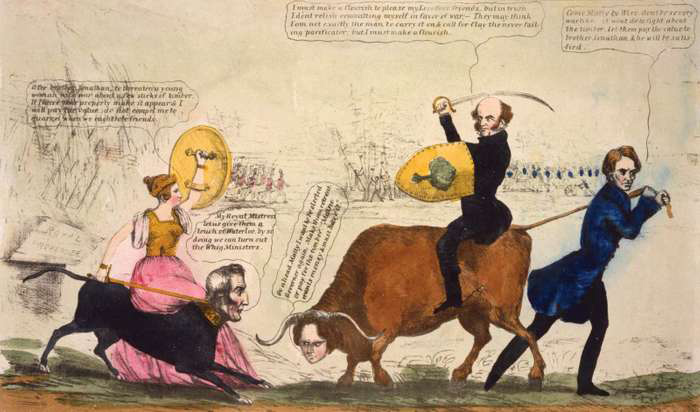Aug. 9, 1842: The U.S. signs the Treaty of Washington, or Webster-Ashburton Treaty, with the United Kingdom, establishing what is now the boundary between the United States and Canada, including the boundary in northern and eastern Maine.

The treaty resolves a dispute known as the “Aroostook War,” a disagreement that led to deployment of militia units to the northern frontier and almost resulted in armed conflict.
The 1783 peace treaty that ended the Revolutionary War between the United States and Great Britain had failed to define adequately the border separating Maine and what later became the Canadian province of New Brunswick, resulting in confusion and dangerously competing land claims.
Aug. 9, 1911: Aviator St. Croix Johnstone, 24, of Chicago makes Maine’s first plane flight, taking off in a Moisant monoplane in Augusta for a half-hour, 25-mile trip up and down the Kennebec Valley. About 10,000 people watch the exhibition. The event occurs about eight years after the Wright brothers’ famed first flights in North Carolina.
Six days later, Johnstone dies in a flying accident during the 1911 Chicago International Aviation Meet.
The Augusta demonstration begins on the baseball diamond at the Augusta Driving Park, a horse-racing venue located about where the local YCMA stands today, on the west bank of the Kennebec River and immediately south of Capitol Park. It is part of Governor’s Day activities, which also include several horse races.
Johnstone’s initial attempt about 5 p.m. fails to get the speeding aircraft off the ground, so he shuts off the motor in centerfield and the plane rolls to a stop. He tries again at 5:20 p.m., and the plane floats aloft by the time it reaches second base, drawing a roar from the crowd, according to a story in the next day’s Daily Kennebec Journal. The southbound aircraft creeps steadily higher, gliding along “as steadily as a ship at sea, with the buzz of the engine and the whirr of the propellor audible to everyone,” the newspaper reports.
The plane turns east, crosses the river, circles the state hospital’s tall chimney, then flies back over the racetrack, still ascending. It crosses the river again, returns to the hospital, then flies north over the Augusta Lumber Co. mill, which emits a whistle blast to celebrate the pilot’s achievement. Johnstone’s plane, within sight of the spectators through all of this, then disappears briefly over the city’s northeastern section. It reappears over Capitol Park, then touches down without incident on the baseball diamond, only a few feet from where it had started, and rolls into the outfield.
“The crowd then made a grand rush for the plucky and skilled aviator and he was repeatedly cheered and congratulated,” the Kennebec Journal reports.
On Aug. 15 in Chicago, Johnstone is one of two pilots killed in separate crashes, both of which are attributed to mechanical failure. In Johnstone’s case, the pilot is over Lake Michigan when his plane’s engine fails, and the plane plunges into the lake. Trapped under the motor, Johnstone drowns when it drags him into deep water. His body is recovered an hour later.
Presented by:

Joseph Owen is an author, retired newspaper editor and board member of the Kennebec Historical Society. Owen’s book, “This Day in Maine,” can be ordered at islandportpress.com. To get a signed copy use promo code signedbyjoe at checkout. Joe can be contacted at: jowen@mainetoday.com.
Send questions/comments to the editors.


